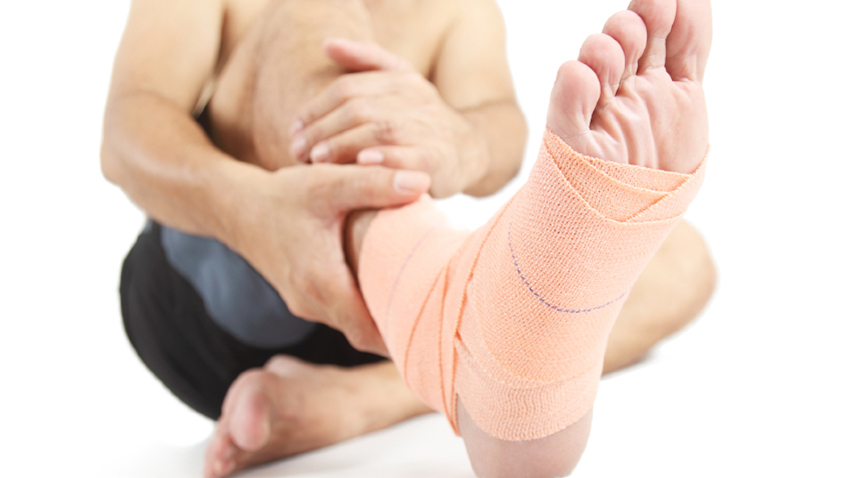Upper Body
Lower Body
General
Sports Related
Physiotherapy - Ankles
Knowledge is Power.
True/False - Quiz: Do You Understand Physiotherapy - Ankles?
Action Plan - Physiotherapy - Ankles
 The ankle joint is one of the major weight-bearing structures in the body, and it is often injured when walking or running or twisting or landing incorrectly in sport. You’ll find that many ankle injury rehabilitation plans include physiotherapy. A physiotherapist can help you heal and avoid re-injury when you return to sport or daily tasks. The first step will be creating a customized treatment plan with your physician and physiotherapist.
The ankle joint is one of the major weight-bearing structures in the body, and it is often injured when walking or running or twisting or landing incorrectly in sport. You’ll find that many ankle injury rehabilitation plans include physiotherapy. A physiotherapist can help you heal and avoid re-injury when you return to sport or daily tasks. The first step will be creating a customized treatment plan with your physician and physiotherapist.
Physiotherapy for Ankle Injuries
If you don’t have a fracture, you should seek treatment from a physiotherapist as soon as possible. If you’ve suffered a sports injury, you may see a sports physiotherapist. Usually, your physiotherapist will start you off with exercises to improve your range of motion and strengthen your ankle. You may do these in the hospital and/or physiotherapy clinic and will likely continue with a home exercise program. You may also do some trunk exercises, because while you can’t weight bear on your ankle, you need to keep your trunk strong. As you’re able to weight bear a bit more, you’ll move to weight-bearing exercises and proprioceptive exercising.
 Other Physiotherapy Treatments for Ankle Injuries
Other Physiotherapy Treatments for Ankle Injuries
- Manual therapy (hands-on manipulation)
- Ultrasound: This deep heating treatment is administered by your physical therapist using a wand that’s connected to an ultrasound machine pressed against your skin.
- Dry needling and/or acupuncture: Some patients find relief from a practitioner inserting short, thin needles into pressure points.
- TENS (transcutaneous electrical nerve stimulation): Your physiotherapist may use this technique to decrease pain around injury.
- Taping: Your physiotherapist may tape the injured site to provide support and stability while you heal.
- Heat therapy: The physiotherapist may incorporate heat into your treatment to reduce pain, increase circulation and relax the muscles.
- Massage and other soft tissue techniques
Your physiotherapist will probably use a combination of treatment techniques to help you recover after an ankle injury. Although a physiotherapist can help you improve symptoms, reduce pain and increase mobility, it will also be up to you to continue an exercise program at home for optimal results.
Talk to your healthcare provider if you'd like more information on physiotherapy for ankle injuries.
Visit HealthChoicesFirst.com for more videos and resources on orthopedics.
Print this Action Plan and check off items that you want to discuss with your healthcare provider
-
A physiotherapist can help you heal and avoid re-injury when you return to sport or daily tasks. The first step will be creating a customized treatment plan with your physician and physiotherapist.
-
Usually, your physiotherapist will start you off with exercises to improve your range of motion and strengthen your ankle. You may do these in the hospital and/or physiotherapy clinic and will likely continue with a home exercise program. You may also do some trunk exercises, because while you can’t weight bear on your ankle, you need to keep your trunk strong.
-
Your physiotherapist may use hands-on techniques such as joint mobilization and massage to treat your ankle injury.
-
Ultrasound is a deep heating treatment that is administered by your physical therapist using a wand that’s connected to an ultrasound machine pressed against your skin.
-
Your physiotherapist may tape the injured site to provide support and stability while your ankle injury heals.

